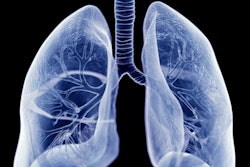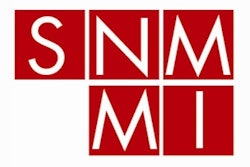
Implementing a proactive, multipronged strategy to combat the COVID-19 pandemic helped Mount Sinai Hospital safeguard its patients and staff as much as humanly possible, according to a Monday presentation at the Society of Nuclear Medicine and Molecular Imaging (SNMMI) 2020 virtual annual meeting.
The World Health Organization officially announced on March 11 that COVID-19 had become a pandemic. It was also the time when the New York City hospital begin to experience an exponential increase in cases of infection with the SARS-CoV-2 virus.
"It was a rude awakening that the pandemic was here," Dr. Munir Ghesani, associate professor of radiology at Mount Sinai Hospital, told the virtual attendees. "The situation was very fluid, changing hour by hour, day by day, to the point that our policies invariably changed, making sure they were not written in stone, to adapt as time went by. Fortunately, our institution was very proactive in implementing several multipronged approaches to ensure that information was disseminated rapidly, and that included our policies and procedures."
At the height of the pandemic in New York City, approximately 2,200 COVID-19 patients were hospitalized in the Mount Sinai healthcare system. As COVID-19 started to engulf the city, many patients, especially those whose immune systems were already compromised due to chemotherapy or other radiation treatments for cancer, often canceled appointments out of fear that a visit to the hospital could expose them to the virus. Thus, Mount Sinai began telehealth and virtual consultations, first for outpatient medical appointments and soon thereafter for radioiodine therapy and peptide receptor radionuclide therapy patients.
When patients did need to come to the facility, nuclear medicine receptionists provided COVID-19 screening questionnaires at the time of their arrival. Symptomatic patients were immediately isolated for further assessment by nurses to determine if their conditions were related to the virus or other health issues. Visitors also were screened by medical staff at hospital entrances for elevated temperature and COVID-19 symptoms. If they tested positive, they were asked to contact their physicians.
Naturally, the safety of Mount Sinai patients and staff "has been paramount at every stage of the pandemic," added Maria DaCosta, a certified nuclear medicine technologist who is supervisor of nuclear medicine at Mount Sinai. "The nuclear medicine community dealt with a special set of issues while providing care for patients with COVID-19, as well as their own ongoing healthcare needs."
Of course, not all cases can be handled over the internet, and patients needing greater care must come to Mount Sinai in person. Thus, imaging guidelines were modified to comply with infection prevention protocols during the COVID pandemic. For example, technologists had to change the way they approached lung ventilation perfusion imaging to avoid exposure to COVID-19 through airborne particles.
"Very early on, we realized that one of the things we needed to do was increase [protection against] aerosolizing procedures. We needed to be very mindful during lung ventilation scans and used chest x-rays as our new triaging method," Ghesani explained.
The Mount Sinai staff strongly enforced a policy that chest x-rays be performed "within 24 hours, making sure that we were looking at the most recent development in regard to the patient's disease status. If the chest x-ray was clear, we did not hesitate to proceed with lung perfusion imaging."
One of the early requirements was that Mount Sinai staff wear surgical masks, face shields, isolation gowns, and gloves. The staff also must perform daily temperature checks before leaving for work and at the end of each day. They also must contact an employee health services (EHS) representative from home if they are symptomatic. EHS specialists help determine the need for COVID-19 testing and/or quarantine for 14 days. In those cases, employees are in daily communication with EHS and cannot return to work until after the 14-day quarantine and are asymptomatic for at least 72 hours.
Social distancing protocols also are enforced in waiting areas with seating that allows for six feet of distance, along with strict isolation practices to separate COVID-19-positive patients or people suspected of having the condition from others through designated individual waiting rooms. The facility also limits the amount of staff handling positive COVID-19 cases to minimize their risk of exposure and to conserve personal protective equipment (PPE) supplies.
SNMMI's 2020 virtual annual meeting continues on Tuesday, the fourth and final day of the conference.




















